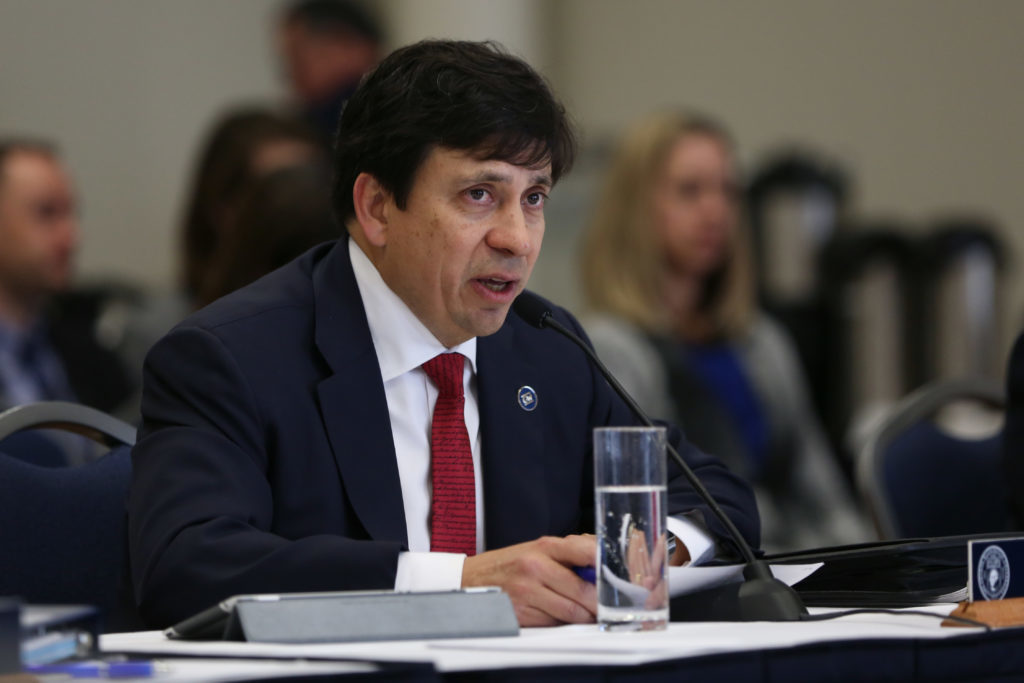The Board of Trustees is opening up more of its meetings to students, faculty and staff beginning next month.
Board Chairman Nelson Carbonell announced Friday at a Faculty Senate meeting that the Board is doing away with closed sessions during its quarterly meetings and the public will be allowed to observe every part of the meeting except for executive session, when trustees discuss legal and disciplinary matters. Experts said the move would give students and faculty – who have had a historically fraught relationship with the Board – greater access to trustees and the far-reaching decisions they make.
In the past, the University president, Board chair and the heads of the Student Association and Faculty Senate would give remarks during public session and some decisions – like voting for new trustees – would be made, but more serious decision making would occur out of the public eye.
Confidential issues involving students, faculty and staff and key budget decisions will still be closed to the public, but reports from committees like academic affairs, finance and government and nominations – previously given behind closed doors – will now be made public, he said.
Carbonell said the move seemed like the natural next step for the Board, which has sought to become more accessible in recent years. The Board is also attempting to give students a greater say in its decisions this year allowing the SA president to sit at the table with trustees and adding students to its academic affairs committee.
It also follows the lead of University President Thomas LeBlanc who Carbonell said has set a higher standard for transparency with his frank discussions about the University’s shortcomings.
“He’s very transparent, that’s how he wants to operate,” he said in an interview. “And we hired him and it makes perfect sense to get moving in that direction.”
Faculty and students should be included in the discussion as trustees make far-reaching decisions about the University’s direction, Carbonell said. Hearing directly from students and faculty will allow trustees have to a greater understanding the impact of their decisions, he added.
Phil Wirtz, a professor of decision sciences and psychology, said at the Faculty Senate meeting that he supported the Board’s initiatives to hear more from faculty and students but still thought the Board interfered too much with the daily life of the University. In a tense exchange with Carbonell at Friday’s meeting, Wirtz said the Board should take it’s lead from LeBlanc.
“What needs to happen is the chairman of the Board of Trustees and the board comes to the president and asks him what he needs,” he said.
Carbonell dismissed the suggestion saying the University president works for the Board.
Don Parsons, a professor of economics, said communication issues between faculty and the Board needed to be addressed. In the past, he said major decisions like forming the goals of the University’s 10-year strategic plan had been made without sufficient input from faculty.
“There was a great disconnect between faculty and their input and what came down from on high,” Parsons said.
In 2015, three resolutions were passed by the Board about faculty shared governance policies. Some professors were concerned at the time that the Board would finalize the way the faculty code is approved without appropriate faculty consideration.
Donald Heller, the provost and vice president of academic affairs at the University of San Francisco, said allowing faculty into Board meetings would increase their understanding of the Board and help improve their relationship with trustees.
He said in his experience as a trustee at Depaul University and as an administrator at USF, it’s unusual for a board to be open to the public. A transparency move like allowing students to vote on task forces – which the Board is also doing this year – is more common.
Over the summer, the Board of Trustees decided to form two task forces with student representatives about the student experience and alumni engagement.
Heller said there is a downside to open sessions because Board members might become uncomfortable discussing matters in the public eye and move more discussions into executive session.
“The deliberations of the Board may not be quite as open and therefore the decisions that they make might not be as good as when they were meeting in closed sessions,” he said.
Jay Dee, a professor of higher education administration at the University of Massachusetts-Boston, said what may seem like an open meeting isn’t all that open. In his experience with open sessions at public universities – which are required by law – many turn into a “ritual” where trustees give reports but no discussion takes place, he said.
Dee said some research does show open sessions lead to better accountability and transparency but trustees should be aware they will have to work on any tensions in their relationships with faculty and students.
“It creates a new mechanism for students to approach the board,” he said. “Board members should be prepared to hear more student issues and more faculty issues.”





